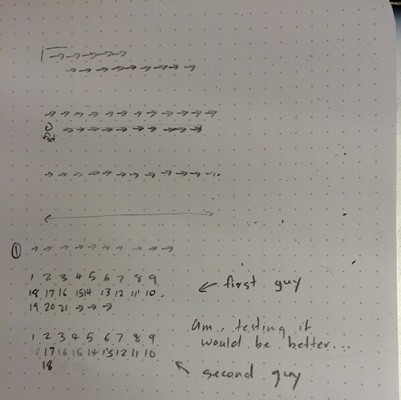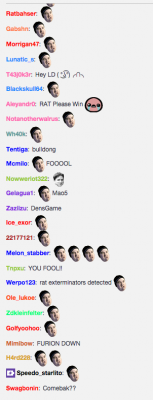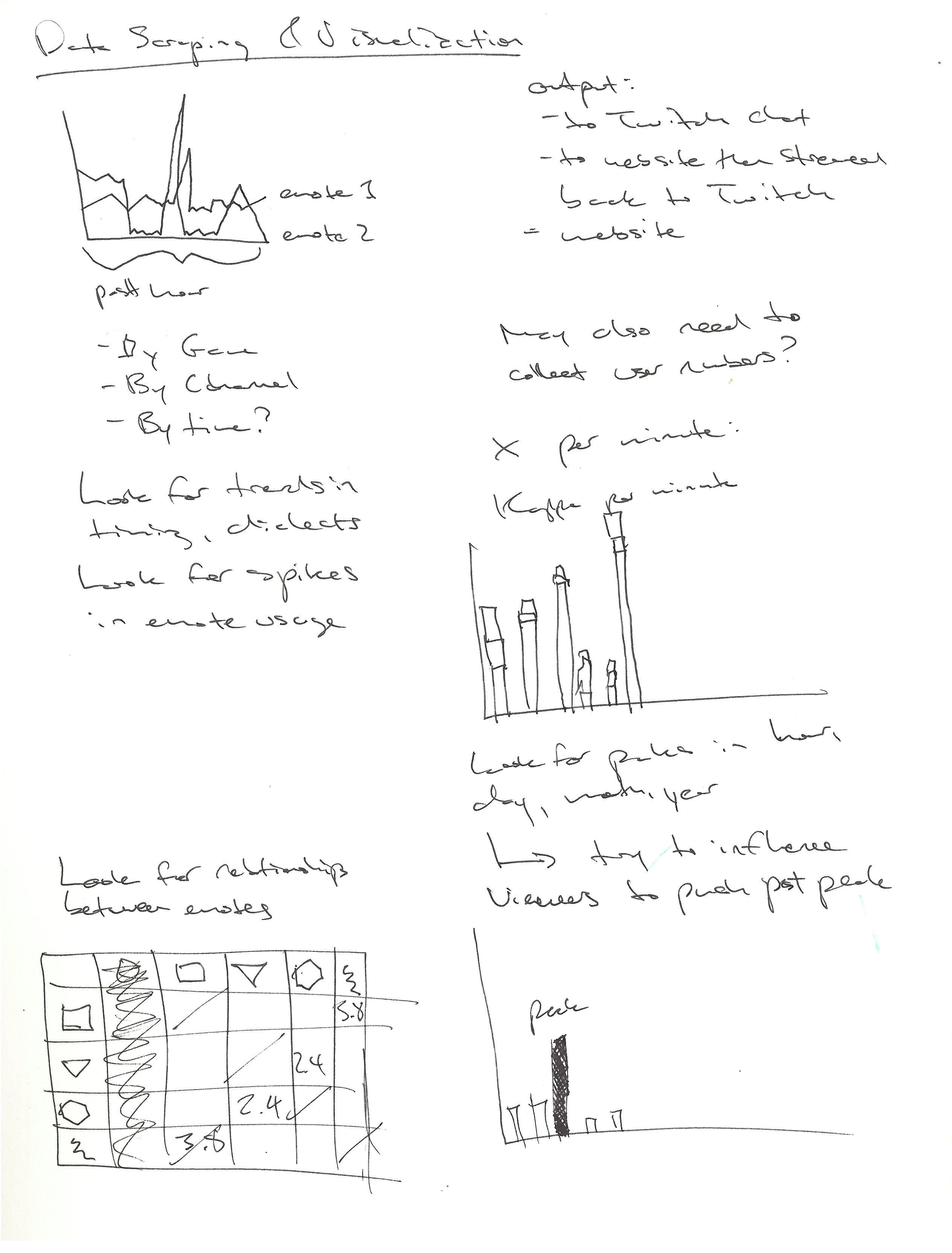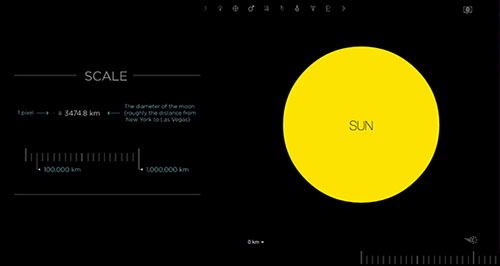starts synced ->, synced <- bottom guy turned first.
Hi this is my poem / timer.
Each row is 30 steps, and takes 30 seconds.
The return trip included makes it 1 minute per cycle. At each 59th step of the second being, he/she turns around before the 60th step. This causes a small gap that represents a minute. Each round the characters’ gap increases once as more minutes are represented. This pattern eventually cycles though and returns to its default state. There can be a total of 60 gaps between them. Meaning that this piece can time up to exactly 1 hour.
It’s also a little poem about two friends separating and getting back together :D
Here is my sketch. and some explaination
Here is my code!
#include <pebble.h>
#include <stdlib.h>
static Window *s_main_window;
int s_second = 0;
int s_second2 = 0;
bool direction1 = true;
bool direction2 = true;
bool isam = true;
static BitmapLayer *s_bg;
static GBitmap *s_bg_bitmap;
static BitmapLayer *s_sprite_minuite1;
bool s_sprite_minuite1_frame = true;
static BitmapLayer *s_sprite_minuite2;
bool s_sprite_minuite2_frame = true;
static GBitmap *s_sprite1f1_bitmap;
static GBitmap *s_sprite1f2_bitmap;
static GBitmap *s_sprite2f1_bitmap;
static GBitmap *s_sprite2f2_bitmap;
static GBitmap *s_spritef1_bitmap;
static GBitmap *s_spritef2_bitmap;
static GBitmap *s_spritef1L_bitmap;
static GBitmap *s_spritef2L_bitmap;
typedef struct vector2 vector2;
struct vector2
{
float x;
float y;
};
vector2 sprite1Position = {10, 10};
vector2 sprite2Position = {10 ,23};
bool animationFrame = false;
static PropertyAnimation *s_property_animation;
static PropertyAnimation *s_property_animation2;
static void destroy_property_animation(PropertyAnimation **prop_animation) {
if (*prop_animation == NULL) {
return;
}
if (animation_is_scheduled((Animation*) *prop_animation)) {
animation_unschedule((Animation*) *prop_animation);
}
property_animation_destroy(*prop_animation);
*prop_animation = NULL;
}
static void trigger_custom_animation() {
destroy_property_animation(&s_property_animation);
//*s_property_animation = NULL;
destroy_property_animation(&s_property_animation2);
//*s_property_animation2 = NULL;
Layer *s_layer = bitmap_layer_get_layer(s_sprite_minuite1);
Layer *s_layer2 = bitmap_layer_get_layer(s_sprite_minuite2);
// Set start and end
GRect from_frame = layer_get_frame(s_layer);
GRect to_frame = GRect(sprite1Position.x, sprite1Position.y, 10, 11);
GRect from_frame2 = layer_get_frame(s_layer2);
GRect to_frame2 = GRect(sprite2Position.x, sprite2Position.y, 10, 11);
// move first guy
if (direction1 == true)
{
if (sprite1Position.x < 130)
{
sprite1Position.x += 4.0;
}
}else
{
if (sprite1Position.x > 10)
{
sprite1Position.x -= 4.0;
}
}
if (direction2 == true)
{
if (sprite2Position.x < 130)
{
sprite2Position.x += 4.0;
}
}else
{
if (sprite2Position.x > 10)
{
sprite2Position.x -= 4.0;
}
}
// Create the animation
s_property_animation = property_animation_create_layer_frame(s_layer, &from_frame, &to_frame);
s_property_animation2 = property_animation_create_layer_frame(s_layer2, &from_frame2, &to_frame2);
// Flip the animations
if (s_sprite_minuite1_frame)
{
bitmap_layer_set_bitmap (s_sprite_minuite1, s_sprite1f2_bitmap);
s_sprite_minuite1_frame = !s_sprite_minuite1_frame;
}
else
{
bitmap_layer_set_bitmap (s_sprite_minuite1, s_sprite1f1_bitmap);
s_sprite_minuite1_frame = !s_sprite_minuite1_frame;
}
// Flip the animations
if (s_sprite_minuite2_frame)
{
bitmap_layer_set_bitmap (s_sprite_minuite2, s_sprite1f1_bitmap);
s_sprite_minuite2_frame = !s_sprite_minuite2_frame;
}
else
{
bitmap_layer_set_bitmap (s_sprite_minuite2, s_sprite1f2_bitmap);
s_sprite_minuite2_frame = !s_sprite_minuite2_frame;
}
// Schedule to occur ASAP with default settings
animation_schedule((Animation*) s_property_animation);
animation_schedule((Animation*) s_property_animation2);
}
static void main_window_load(Window *window)
{
// Sprite 1 textures
s_spritef1_bitmap = gbitmap_create_with_resource(RESOURCE_ID_f1);
s_spritef2_bitmap = gbitmap_create_with_resource(RESOURCE_ID_f2);
s_spritef1L_bitmap = gbitmap_create_with_resource(RESOURCE_ID_f1L);
s_spritef2L_bitmap = gbitmap_create_with_resource(RESOURCE_ID_f2L);
// Sprite 1 Set initial
s_sprite1f1_bitmap = s_spritef1_bitmap;
s_sprite1f2_bitmap = s_spritef2_bitmap;
// Sprite 2
s_sprite2f1_bitmap = s_spritef1L_bitmap;
s_sprite2f2_bitmap = s_spritef2L_bitmap;
s_bg_bitmap = gbitmap_create_with_resource(RESOURCE_ID_bg);
s_bg = bitmap_layer_create(GRect(10, 10, 120, 120));
bitmap_layer_set_bitmap(s_bg, s_bg_bitmap);
layer_add_child(window_get_root_layer(window), bitmap_layer_get_layer(s_bg));
// Sprite Minuite 1
s_sprite_minuite1 = bitmap_layer_create(GRect(0, 0, 10, 11));
bitmap_layer_set_bitmap(s_sprite_minuite1, s_spritef1_bitmap);
layer_add_child(window_get_root_layer(window), bitmap_layer_get_layer(s_sprite_minuite1));
// Sprite Minuite 2
s_sprite_minuite2 = bitmap_layer_create(GRect(0, 0, 10, 11));
bitmap_layer_set_bitmap(s_sprite_minuite2, s_spritef1_bitmap);
layer_add_child(window_get_root_layer(window), bitmap_layer_get_layer(s_sprite_minuite2));
}
static void main_window_unload(Window *window) {
// Destroy TextLayer
}
static void tick_handler(struct tm *tick_time, TimeUnits units_changed)
{
trigger_custom_animation();
s_second = s_second + 1;
// First sprite takes 30 steps, 30 steps
if (s_second >= 30)
{
if (direction1)
{
s_sprite1f1_bitmap = s_spritef1L_bitmap;
s_sprite1f2_bitmap = s_spritef2L_bitmap;
}
else
{
s_sprite1f1_bitmap = s_spritef1_bitmap;
s_sprite1f2_bitmap = s_spritef2_bitmap;
}
direction1 = !direction1;
s_second = 0;
}
// Second sprite takes 30 steps, 29 steps
s_second2 = s_second2 + 1;
if (s_second2 >= 29)
{
if (direction2)
{
if (s_second2 >= 30)
{
s_sprite2f1_bitmap = s_spritef1_bitmap;
s_sprite2f2_bitmap = s_spritef2_bitmap;
direction2 = !direction2;
s_second2 = 0;
}
}
else
{
s_sprite2f1_bitmap = s_spritef1L_bitmap;
s_sprite2f2_bitmap = s_spritef2L_bitmap;
direction2 = !direction2;
s_second2 = 0;
}
}
}
static void init() {
// Create main Window element and assign to pointer
s_main_window = window_create();
// Set handlers to manage the elements inside the Window
window_set_window_handlers(s_main_window, (WindowHandlers) {
.load = main_window_load,
.unload = main_window_unload
});
// Show the Window on the watch, with animated=true
window_stack_push(s_main_window, true);
// Register with TickTimerService
tick_timer_service_subscribe(SECOND_UNIT, tick_handler);
trigger_custom_animation();
}
static void deinit() {
// Destroy Window
window_destroy(s_main_window);
}
int main(void) {
init();
app_event_loop();
deinit();
}












